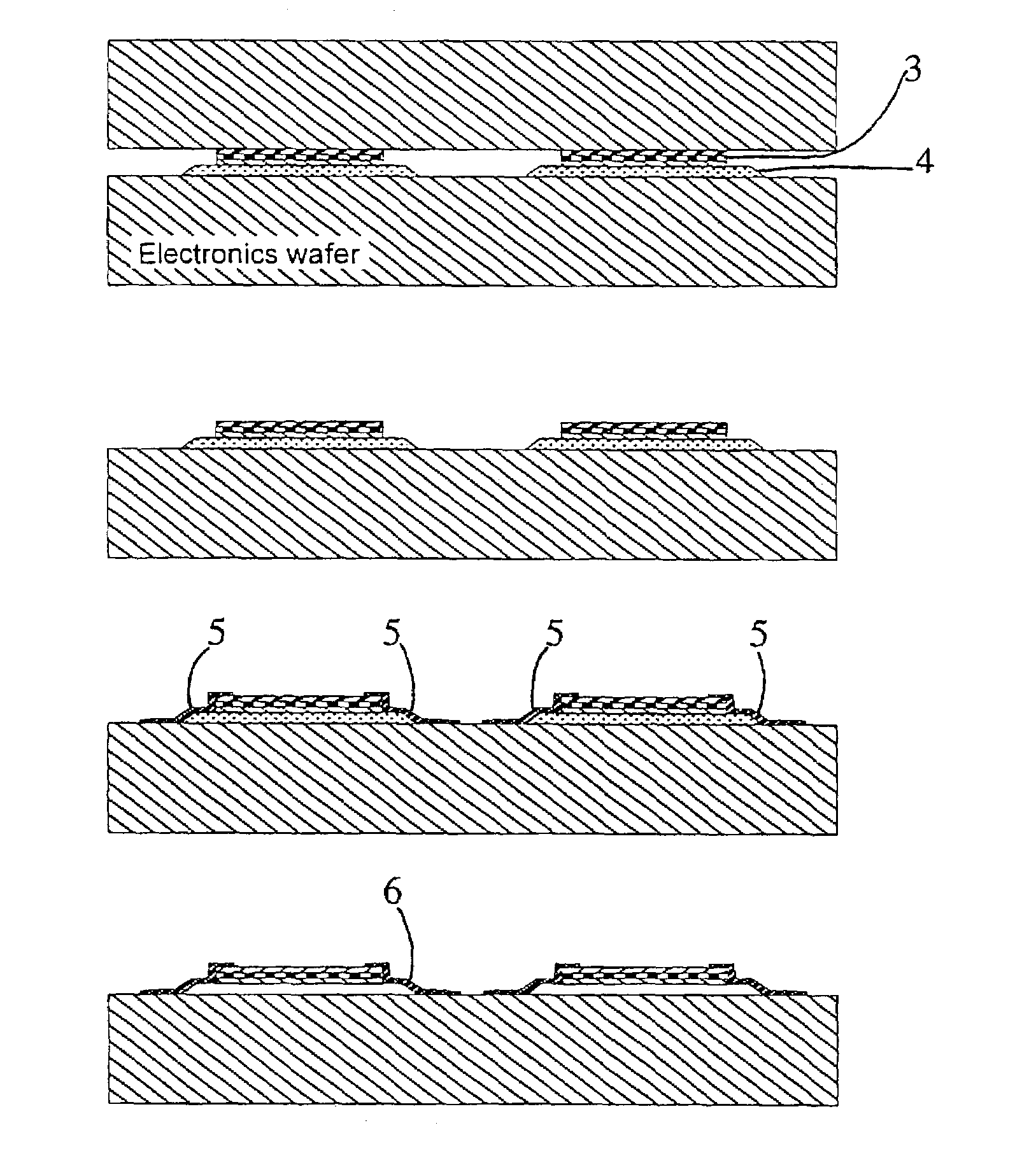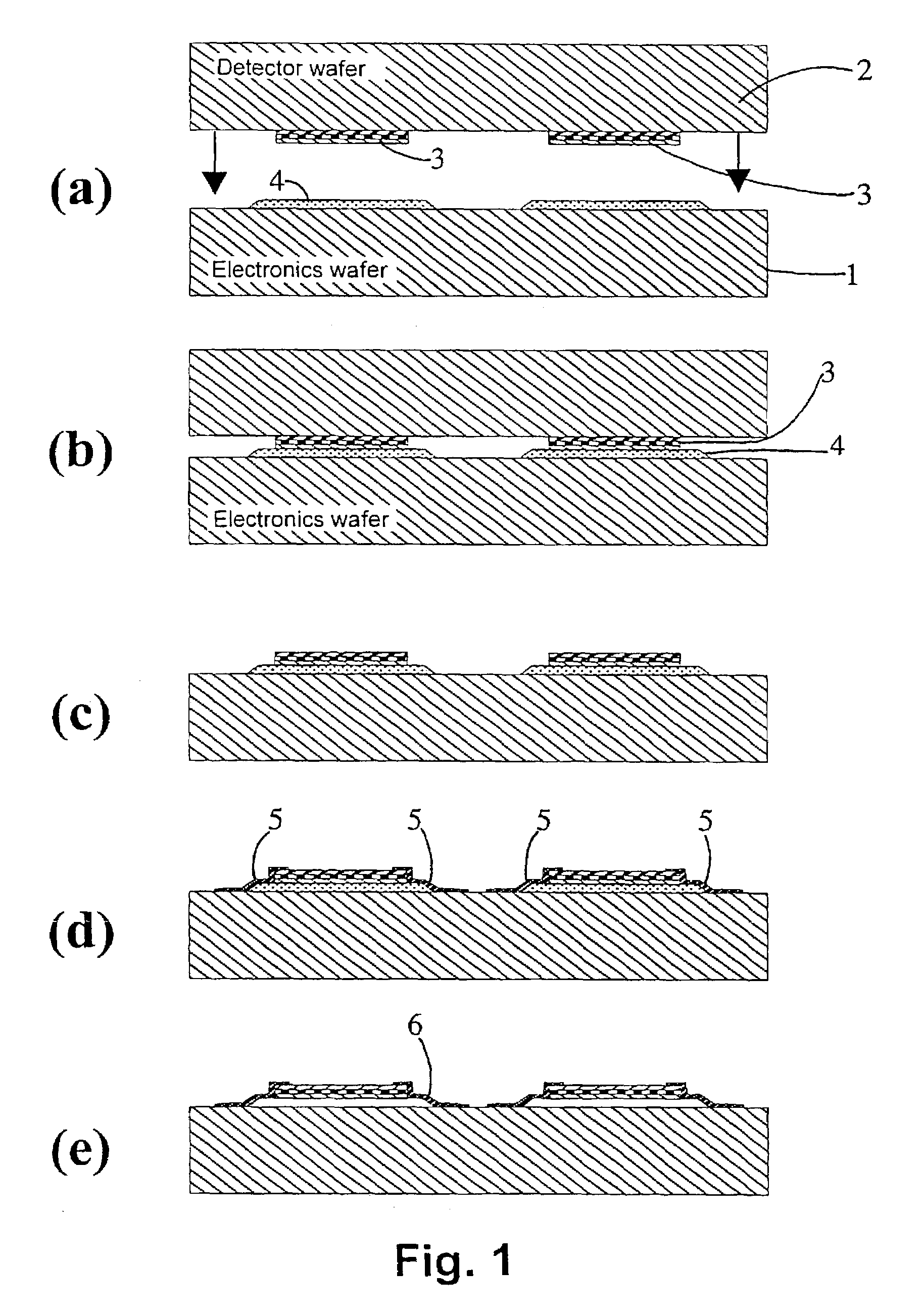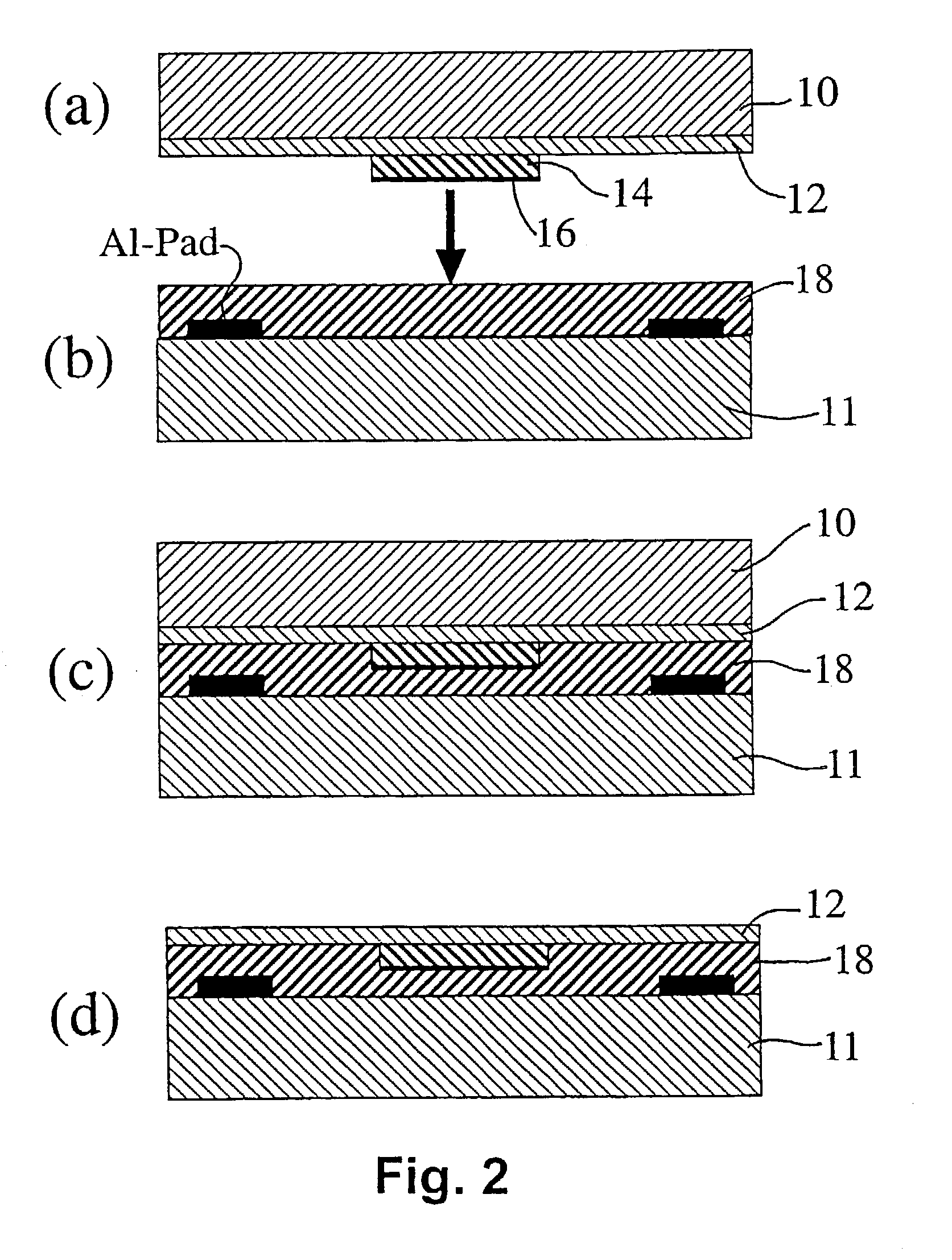Method of joining components
a technology of components and components, applied in the field of joining components, can solve the problems of difficult manufacturing of detectors with optimal performance, limited selection of materials and methods that are usable for the manufacturing of detectors, and damage to electronic components
- Summary
- Abstract
- Description
- Claims
- Application Information
AI Technical Summary
Benefits of technology
Problems solved by technology
Method used
Image
Examples
example 1 (the process of fig.2)
Example 1 (the Process of FIG. 2)
[0034]A silicon wafer 10 is oxidised in an oxidising furnace so that a 1 μm SiO2 layer 12 is produced on its surface. Then a poly-silicon layer 14 of 1 μm thickness is grown on the wafer in a high temperature furnace. A Ti / Pt (50 / 300–500 Å) layer 16 is deposited on the poly-silicon.
[0035]After that, photoresist is spun on the wafer and patterned with photolithography. Then, first the Ti / Pt and subsequently the poly-silicon is etched down to the SiO2 layer with deep reactive ion etching. After stripping of the photoresist the poly-silicon islands remain on the wafer surface (a). The poly-silicon and the SiO2 on the backside of the wafer is etched away with reactive ion etching, so that the backside material of the wafer will be only silicon bulk material. In a next step, first a bonding material 18, e.g. a photo resist, is spun on a ROIC wafer 11, and precured on a hotplate (60° C.) for about 5 min, (b). Then the two wafers are bonded together with a ...
example 2 (process of figs.34 , 57 , 8 and figs.6 , 711 , 12)
Example 2 (Process of FIGS. 34, 57, 8 and FIGS. 6, 711, 12)
[0036]FIG. 3(a) is a top view showing how the cross sections B—B in (b)–(d) are taken. A silicon wafer 40 is oxidised in an oxidising furnace so that a 1 μm SiO2 layer 42 is produced on its surface. Then a poly-silicon layer of 1 μm thickness is provided on the wafer. A Ti / Pt (50+300 Å) layer 44 is deposited on the poly-silicon and patterned with a so called lift-off (FIG. 3(b)). The structures of the Ti / Pt represents the bolometer structures including the bolometer legs. Then a layer 46 of 0.5 μm PE-SiN is deposited on top of the Ti / Pt and polysilicon.
[0037]If for example AlGaAs is used instead of poly-silicon (FIG. 4 showing a similar sequence as in FIG. 3) there needs to be a trench 48, in the temperature sensing material because the resistance of AlGaAs is different in different directions inside the material. In that case the AlGaAs is etched down to the etch stop layer using the Ti / Pt as a mask, before depositing the P...
example 3 (process of fig.5)
Example 3 (Process of FIG. 5)
[0041]A silicon wafer is oxidised in an oxidising furnace so that a 1 μm SiO2 layer is produced on is surface. Then a poly-silicon layer of 1 μm thickness is grown on the wafer in a high temperature furnace. The poly-silicon and the SiO2 on the backside of the wafer is etched with reactive ion etching so that the backside material of the wafer is silicon bulk material.
[0042]A Ti / Pt (50+300 Å) layer is deposited on the poly-silicon and patterned with a so called lift-off. The structures of the Ti / Pt represents the bolometer structures Then a 0.5–4 μm “sacrificial” layer of polyimide is spun on the wafer (on top of the Ti / Pt pattern) and cured.
[0043]Small areas of the polyimide are opened over the Ti / Pt structures. This is done in a way that the polyimide gets sloped walls on this openings. With an other lift-off a second layer of Ti / Pt is patterned on the polyimide representing the leg structures of the detector. The sloped walls of the polyimide guarante...
PUM
| Property | Measurement | Unit |
|---|---|---|
| Temperature | aaaaa | aaaaa |
| Structure | aaaaa | aaaaa |
| Electrical conductor | aaaaa | aaaaa |
Abstract
Description
Claims
Application Information
 Login to View More
Login to View More - R&D
- Intellectual Property
- Life Sciences
- Materials
- Tech Scout
- Unparalleled Data Quality
- Higher Quality Content
- 60% Fewer Hallucinations
Browse by: Latest US Patents, China's latest patents, Technical Efficacy Thesaurus, Application Domain, Technology Topic, Popular Technical Reports.
© 2025 PatSnap. All rights reserved.Legal|Privacy policy|Modern Slavery Act Transparency Statement|Sitemap|About US| Contact US: help@patsnap.com



